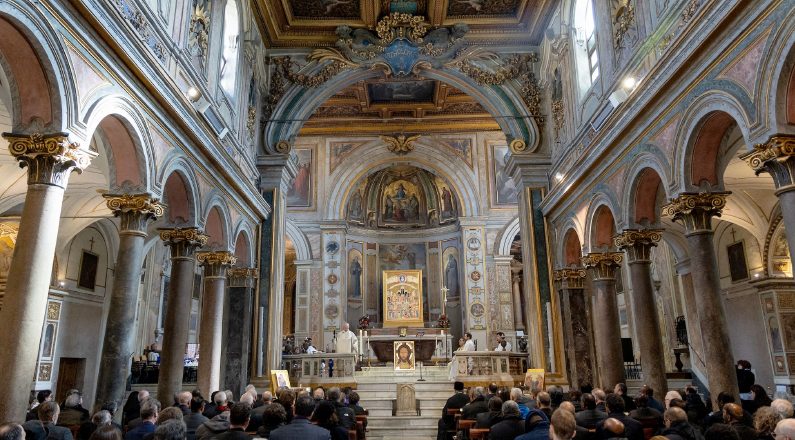(ZENIT News / Vatican City, 01.28.2024).- In the context of the Week of Prayer for Christian Unity 2024, an ecumenical initiative that the Catholic Church is part of, a group of Anglican and Catholic bishops held an ecumenical summit and pilgrimage in Rome from January 22 to 29.
The summit, titled «Growing Together,» was organized by IARCCUM, the International Anglican-Roman Catholic Commission for Unity and Mission. It is an official commission of the Anglican Communion and the Catholic Church established to deepen the relationship between Anglicans and Catholics based on significant theological agreement achieved over years of dialogue and to promote shared mission.
The aim of the week-long summit was to strengthen bonds of friendship and commitment between Anglicans and Catholics for joint witness and mission in a fragmented world. Bishops attended in Anglican-Catholic pairs and, in this context, visited St. Peter’s Basilica in the Vatican (where Anglican choral vespers were held) and the Basilica of St. Bartholomew on the Tiber Island (the ‘Sanctuary of the New Martyrs’), where the Archbishop of Canterbury presided over an Anglican «mass.»

It was in April 2023 when a group of Anglican clergy celebrated an Anglican «mass» in the cathedral of Rome. Two days later, a statement was issued by the cathedral chapter expressing regret:
«The Lateran Chapter, represented by His Excellency Monsignor Guerino Di Tora, Vicar Capitular, expresses deep regret for what happened last Tuesday, April 18, inside the Basilica of St. John Lateran, in Rome. Indeed, a group of about 50 priests, accompanied by their bishop, all belonging to the Anglican Communion, celebrated at the main altar of the Cathedral of Rome, contravening canonical norms. Monsignor Di Tora also explained that the regrettable episode was due to a communication error.»
The canonical norms referred to in the statement are in the Ecumenical Directory, which states in number 137:
«Catholic churches are consecrated or blessed buildings that have significant theological and liturgical significance for the Catholic community. Therefore, they are generally reserved for Catholic worship. However, if there are priests, ministers, or communities not in full communion with the Catholic Church lacking a place or necessary materials for their religious ceremonies, the bishop of the diocese can allow them to use a Catholic church or building and provide the necessary materials for their celebrations. In similar circumstances, they may be allowed to perform burials or hold services in Catholic cemeteries.»
In Rome, the Anglican community has several churches: the Church of All Saints (on Via del Babuino) and St. Paul’s Within the Walls (on Via Napoli). However, the main issue is that the Catholic Church does not recognize the Episcopal succession of Anglican ministers, and therefore, it does not recognize the validity of the «Anglican Mass.» In other words, they do not retain apostolic succession or have consecration in their «masses.» Additionally, they ordain priestesses, which is not recognized by the Catholic Church. Nevertheless, for some greater good, a Catholic basilica was provided to a confession that has churches in Rome, despite the scandal and statement issued by the cathedral of St. John Lateran last year.



